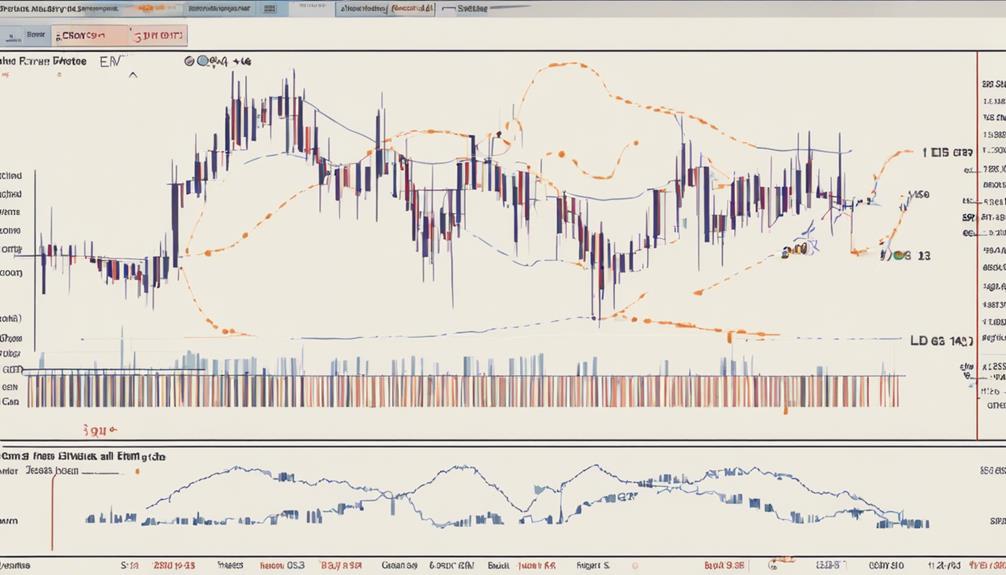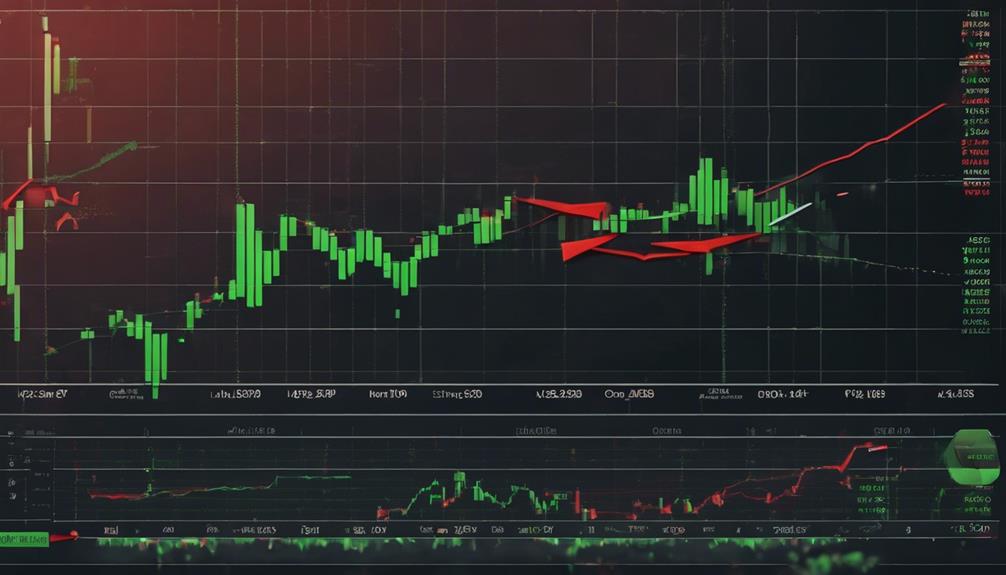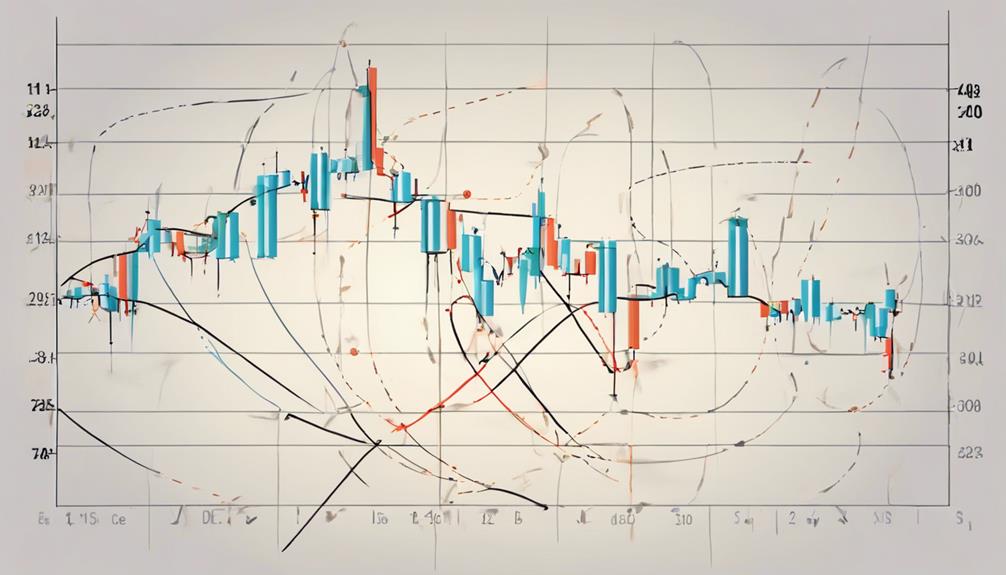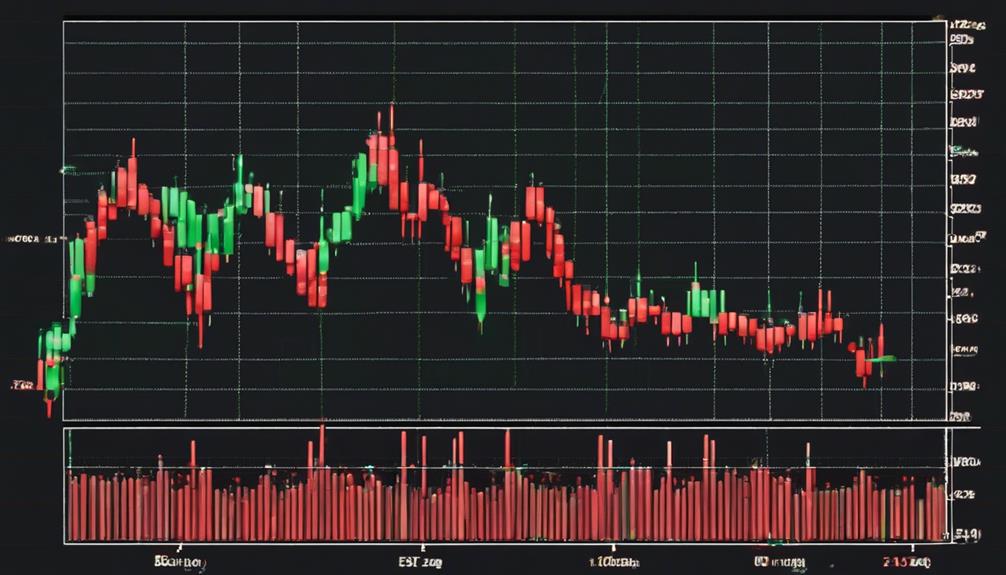As you embark on the journey of mastering essential trend-following indicators, you'll find a wealth of tools at your disposal that can significantly impact your trading decisions. Understanding how these indicators work and when to apply them can make a profound difference in your ability to navigate the complexities of the market.
By unraveling the basics of these indicators, you'll gain valuable insights that can potentially elevate your trading strategies to new heights. Stay tuned to discover the key components that can potentially revolutionize your approach to trend following and enhance your trading outcomes.
Moving Averages Overview
Moving averages serve as fundamental technical analysis tools in smoothing out price data by calculating average prices over specific timeframes. Traders commonly use Simple Moving Averages (SMA) and Exponential Moving Averages (EMA) to identify trend direction and potential buy or sell opportunities.
By analyzing moving average crossovers, traders can determine entry and exit points in the market. Moving Average Convergence-Divergence (MACD) is an essential tool that combines moving averages to provide momentum signals and assist in trend-following strategies.
Understanding the angles of moving averages can offer insights into the strength and sustainability of price trends. Overall, mastering the use of moving averages is crucial for traders looking to make informed decisions based on technical analysis and market trends.
Understanding Exponential Moving Average

Transitioning from the overview of moving averages, let's now focus on the Exponential Moving Average (EMA) and its unique responsiveness to price changes.
EMA gives more weight to recent data points, reacting swiftly to price movements through a smoothing factor. This responsiveness enables EMA to provide timely indications of trend changes, making it ideal for capturing short-term trends.
Traders often utilize EMA crossovers, where short-term EMA crosses above or below the long-term EMA, as entry/exit signals for potential trade opportunities. Due to its ability to filter out noise and emphasize significant price movements, EMA is favored for trend identification and decision-making in the financial markets.
Exploring Average Directional Index (ADX)

Exploring the Average Directional Index (ADX) reveals a technical indicator crucial for assessing trend strength in securities. The ADX, ranging from 0 to 100, signifies the strength of a trend, with values above 25 indicating a strong trend and below 20 suggesting a weak trend.
Comprising the Positive Directional Indicator (+DI) and Negative Directional Indicator (-DI), the ADX helps determine trend direction. Traders utilize the ADX to pinpoint trading opportunities in strong trending markets by filtering out weak trends.
A rising ADX value indicates increasing trend momentum, while a declining ADX value signifies a weakening trend. Understanding the ADX empowers traders to gauge the strength of trends effectively and make informed trading decisions in various market conditions.
Insight Into Moving Average Convergence-Divergence (Macd)

To deepen your understanding of trend strength indicators, we now turn our focus to the insightful concept of Moving Average Convergence-Divergence (MACD).
MACD is an oscillating indicator that combines moving averages to provide trend-following and momentum insights. It consists of a MACD line and a signal line, with crossovers between them indicating potential buy or sell opportunities. An MACD line above zero signals an uptrend, while below zero suggests a downtrend.
Traders often use MACD in conjunction with other indicators, support and resistance levels to confirm trend directions. This popular tool analyzes price stability and momentum shifts, offering valuable signals for traders in various market conditions.
MACD serves as a key instrument for traders seeking to gauge market trends effectively.
Parabolic SAR Explained

Parabolic SAR, known as the Stop and Reverse indicator, is a trend-following tool designed to identify potential reversal points within price trends by displaying dynamic support and resistance levels as dots on a chart. These dots above or below price bars indicate the trend direction; below suggests a downtrend, while above indicates an uptrend.
Traders utilize Parabolic SAR to manage positions effectively by setting stop-loss orders based on these dots. For optimal use, it's advisable to combine this indicator with other technical analysis tools to confirm trend direction and possible reversals.
Can You Distinguish the Essential Trend Following Indicators from Other Indicators?
When it comes to identifying the most effective indicators for trend following, it’s crucial to understand the basics of trend following indicators. Being able to distinguish these essential indicators from other types will help traders to make informed decisions and improve the accuracy of their trading strategies.
Frequently Asked Questions
What Are the Indicators for Determining Trend?
To determine trends, focus on Moving Average (MA), Exponential Moving Average (EMA), Average Directional Index (ADX) for strength, Parabolic SAR for support/resistance, Relative Strength Index (RSI) for overbought/oversold, and On-Balance Volume (OBV) for volume alignment with price changes.
What Is a Trend-Following Indicator?
A trend-following indicator helps you navigate market trends by analyzing current trend direction. It's a critical tool for making informed trading decisions. Did you know that trend-following strategies can generate up to 70% success rates?
What Are the 4 Types of Indicators?
You should know that the 4 types of indicators are Moving Averages, MACD, RSI, and OBV. Each plays a vital role in analyzing trends and momentum in markets. Mastering these tools can boost your trading skills significantly.
What Are the Common Trend-Following Strategies?
To effectively implement common trend-following strategies, you should focus on buying during upward trends and selling during downward movements. Utilize indicators like moving averages, MACD, RSI, and OBV to identify trend direction and entry/exit points for optimal trading outcomes.
Conclusion
In conclusion, mastering essential trend-following indicators is key to successful trading. By utilizing tools like SMA, EMA, ADX, and MACD, you can accurately analyze market trends and make profitable decisions.
For example, a trader using a combination of EMA and MACD correctly predicted a bullish trend in the stock market, resulting in significant profits.
Understanding and applying these indicators effectively can greatly enhance your trading strategy and overall success in the market.
